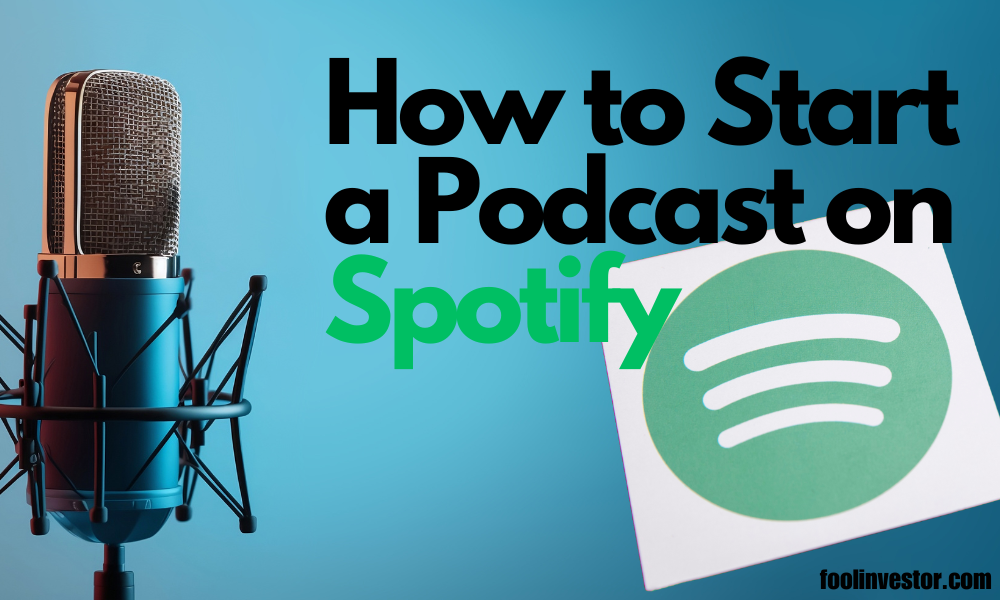Are you interested in starting a podcast and reaching millions of potential listeners? Look no further than Spotify. With its massive user base of 32.5 million monthly listeners, Spotify has become a go-to destination for podcasts. And the best part? Starting a podcast on Spotify is incredibly easy, even if you’re a beginner with no fancy equipment or advanced skills. In this comprehensive guide, we’ll walk you through everything you need to know about podcasting on Spotify, from understanding the platform to uploading your first episode. So let’s dive in!
Table of Contents
- What is Spotify for Podcasters?
- How RSS Feeds Work on Spotify
- Meeting Spotify’s Podcast Requirements
- Creating a Spotify for Podcasters Account
- Adding Information about Your Podcast
- Uploading Your Podcast Files
- Adding Episode Information
- Sharing Your Podcast on Other Directories
- Switching to Spotify for Podcasts Hosting
- Spotify for Podcasters: Expert Insight
- Benefits and Potential Pitfalls
- Conclusion
1. What is Spotify for Podcasters?
Spotify for Podcasters is a free and user-friendly platform designed for hosting, creating, and distributing podcasts. Whether you’re a beginner or an experienced podcaster, Spotify for Podcasters offers a range of features to help you grow your show, engage with your audience, and even monetize your content. Some notable features include in-depth show and episode analytics, monetization tools, in-app or platform recording and editing, Q&A or polls to build audience engagement, and “video episodes” for a unique watching experience for your fans. You can either use Spotify for Podcasts as your hosting platform or upload your episodes to Spotify using an RSS feed from your existing host.
2. How RSS Feeds Work on Spotify
Before we dive into the process of starting a podcast on Spotify, let’s understand how RSS feeds work in the context of Spotify. An RSS feed serves as a unique ID card for your podcast, similar to a house address. Just like there’s only one address per house, there’s only one RSS feed per podcast. Your podcast host will provide you with a code that you can copy and paste into different directories to share your episodes on various platforms, including Spotify. The beauty of RSS feeds is that they update automatically, eliminating the need to share your link with other distributors more than once.
3. Meeting Spotify’s Podcast Requirements
To start a podcast on Spotify, you must first ensure that you meet the platform’s podcast requirements. Here’s a quick rundown of what you need:
- A title for your podcast along with relevant details such as category and primary language.
- Cover art in a 1:1 ratio and in either PNG, JPEG, or TIFF format. Remember, the higher the resolution, the better.
- Your podcast episodes should be in a high bitrate MP3 format (128 kbps+) or MP4 with AAC-LC.
- Episodes should not exceed 12 hours in length.
Once you’ve checked off all the requirements on this checklist, you’re officially ready to upload your podcast to Spotify. So let’s move on to the next steps.
4. Creating a Spotify for Podcasters Account
To upload your podcast to Spotify, you’ll need a Spotify for Podcasters account. Signing up is a simple process. Just visit the Spotify for Podcasters website and fill out the form. You’ll be asked to select whether you want to start a podcast or if you already have one. If you’re starting a new podcast, you can either log in with your existing Spotify account or create a new one. If you already have a podcast and want to switch to Spotify, you can select your current podcast host from the list and claim your show by adding your RSS feed and entering a verification code sent via email.
5. Adding Information about Your Podcast
Once you’ve set up your Spotify for Podcasters account, it’s time to add information about your podcast. This includes:
- Podcast name
- Description
- Cover art
- Category
- Language
- Content type (clean or explicit)
Take your time to craft a compelling podcast name and description that accurately reflects the content and theme of your show. Your cover art should be visually appealing and represent your podcast effectively. Choose the appropriate category and primary language to ensure your podcast reaches the right audience.
6. Uploading Your Podcast Files
Now comes the exciting part: uploading your podcast files to Spotify. If you already have audio or video episodes ready, you can upload them directly. Spotify for Podcasters allows you to upload existing files or create and edit episodes within the platform itself.
To upload an episode ready for publishing, click on the “Quick Upload” button and select the audio or video file you want to upload. If you prefer to create an episode from scratch, click on “Create an episode.” This will take you to a dashboard where you can record or upload audio, add files from your library, and edit and enhance your episodes. The drag-and-drop builder makes it easy to build and preview your episodes multiple times during the editing process.
7. Adding Episode Information
Once you’re satisfied with your episode, it’s time to add the necessary information before publishing. Give your episode a catchy title and write a compelling description that entices listeners to tune in. You can also specify if the episode is part of a series, indicate the episode type, and note whether the content is clean or explicit. These details help listeners navigate and discover your podcast more easily.
8. Sharing Your Podcast on Other Directories
Congratulations! Your podcast is now live on Spotify, reaching millions of potential listeners worldwide. But why stop at Spotify alone? To maximize your podcast’s reach, you can share it on other directories as well. To do this, you’ll need to use your RSS feed link. On the podcasters.spotify.com website, navigate to the “Settings” tab, then click on “Podcast Availability,” and finally select “RSS Distribution.” This will provide you with a unique link that you can paste into the designated distribution spot on other podcast directories.
9. Switching to Spotify for Podcasts Hosting
If you already have a podcast host but want to switch to Spotify for Podcasts hosting, the process is relatively straightforward. Rest assured, you won’t lose your existing episodes or profiles on other platforms. Follow these three simple steps:
- Visit the Spotify for Podcasters switching page and use the search field to enter your unique RSS link or podcast name.
- Sign up for a Spotify for Podcasters account or import your podcast into an existing account.
- Redirect your RSS feed to point to your new Spotify URL. The exact process for this final step may vary depending on your hosting provider, so be sure to follow their specific instructions.
Once you’ve successfully migrated your podcast to Spotify, you can take advantage of all the features and benefits the platform has to offer. You can continue uploading audio or video episodes, or create new episodes using the built-in recording and editing tools.
10. Spotify for Podcasters: Expert Insight
To gain a better understanding of Spotify for Podcasters, let’s hear from some experts in the podcasting industry. Troy Sandidge, host of the iDigress Podcast, highlights the creative tools and features offered by Spotify for Podcasters. He also praises the platform’s commitment to accessibility, particularly for minority-led podcasters. Spotify’s “Making Space” initiative, which provides free recording spaces for podcasters, is a game-changer for those who may not have the financial means to start their podcast. Sandidge emphasizes how Spotify for Podcasters provides an equity pathway for more creatives to proceed.
Al and Leanne Elliot, hosts of Truth, Lies, and Workplace Culture, have also found value in using Spotify for Podcasts. They appreciate the platform’s continuous rollout of new features that benefit podcast creators and encourage listeners to switch to Spotify. The Elliots highlight the sharper analytics compared to platforms like Apple Podcasts, the openness of Spotify’s development team to feedback and ideas, and the simplified monetization process for integrating paid placements or ads.
According to Sandidge, Spotify for Podcasters goes beyond just providing a hosting platform. It offers a fully streamlined turnkey solution, coupled with training and opportunities to help creatives elevate and grow their podcasts.
11. Benefits and Potential Pitfalls
While Spotify for Podcasters offers numerous benefits, it’s important to be aware of potential pitfalls as well. The Elliots point out a couple of considerations:
- Gaining visibility in search results may take some time, as the podcast category on Spotify is relatively new. However, the advanced algorithm increases the chances of your podcast being discovered by listeners.
- Spotify’s communication regarding new features may not always be clear. The Elliots mention the Q&A panel as an example of a unique feature, but they haven’t yet figured out where the responses appear.
It’s crucial to keep these factors in mind as you navigate the world of podcasting on Spotify.
12. Conclusion
In summary, starting a podcast on Spotify is a straightforward process that can help you reach millions of listeners worldwide. With Spotify for Podcasters, you have access to powerful features, in-depth analytics, and opportunities for monetization. By following the steps outlined in this guide, you can create and upload your podcast episodes, share your content on other directories, and even switch to Spotify’s hosting platform if desired. Remember to leverage the insights from podcasting experts and be mindful of potential challenges along the way. So go ahead, unleash your creativity, and dive into the exciting world of podcasting on Spotify!


